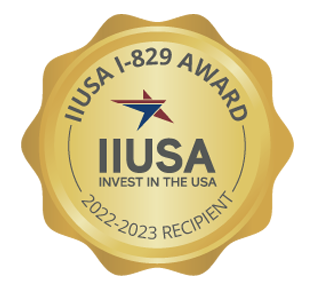How the EB-5 Program and President Trump’s “Gold Card” Can Co-Exist
In the evolving landscape of U.S. immigration policy, two distinct pathways to American access have emerged, each serving a different demographic and economic function: the long-established EB-5 Immigrant Investor Program and the newly proposed “Gold Card” concept by President Donald Trump. While some may view these two programs as potentially overlapping or even conflicting, a closer look reveals they are, in fact, complementary. Their continued coexistence stands to benefit the U.S. economy on multiple fronts.
Understanding the EB-5 Program
The EB-5 Immigrant Investor Program, created by Congress in 1990, offers foreign nationals a pathway to permanent U.S. residency (a green card) in exchange for a substantial investment in a U.S.-based commercial enterprise that creates or preserves at least 10 full-time jobs for American workers. The required investment amount currently ranges from $800,000 to $1.05 million, depending on the location and nature of the project.
Though it carries the “investor” label, the EB-5 program has evolved into a popular option for international students and professionals on work visas — individuals already residing in the United States who wish to secure permanent residency and a more stable future in the country. These participants are typically younger, career-oriented, and seeking long-term integration into American society, including access to the U.S. job market, education system, and the eventual option for citizenship.
Introducing the Gold Card
The proposed Gold Card, by contrast, is tailored specifically for ultra-high-net-worth individuals (UHNWIs) who desire visa-free travel and extended stays in the United States without the obligations of permanent residency — most notably, U.S. worldwide income taxation.
This demographic, often composed of global entrepreneurs, investors, and family office principals, frequently avoids U.S. green cards precisely to sidestep the IRS's global taxation policies. The Gold Card would address this gap by offering an elite, long-term U.S. visa: potentially similar in nature to the investor visa offerings of countries like Portugal, Singapore, or the UAE, allowing the U.S. to remain attractive to the global elite without forcing them into a tax framework they are unwilling to accept.
Two Programs, Two Audiences
At their core, the EB-5 and Gold Card programs serve entirely different market segments.
- EB-5 applicants tend to be ambitious students, skilled professionals, or middle- to upper-middle-class families seeking permanent integration into American life.
- Gold Card applicants are already global citizens, often with homes and investments across continents, and are interested in access, not assimilation.
Their differing structures, benefits, and target demographics mean that neither program cannibalizes the other. Instead, they complement each other by attracting a broader spectrum of foreign capital and talent into the United States.
Economic Synergy
Both programs ultimately contribute to the U.S. economy, but in different ways. EB-5 investments often fund real estate developments, infrastructure, and job-creating enterprises, while also bringing in long-term residents who will live, spend, and pay taxes domestically. The Gold Card, meanwhile, can drive luxury spending, tourism, real estate acquisitions, and U.S.-based business ventures from UHNWIs without necessitating long-term residency commitments.
By maintaining both options, the United States positions itself as a global hub for innovation, capital, and diversity—appealing to both the immigrant entrepreneur building a life from the ground up and the billionaire investor seeking strategic access to U.S. markets.
A Call for Coexistence
Rather than viewing the EB-5 and Gold Card programs as competitors, policymakers should recognize their potential for synergy. By tailoring each program to its ideal audience, the U.S. can expand its global reach, attract foreign investment at multiple economic levels, and strengthen its position in an increasingly competitive global migration landscape.
In a time when nations around the world are aggressively courting both capital and talent, the U.S. should not limit itself to a one-size-fits-all approach. The EB-5 program and the Gold Card can—and should—coexist, each reinforcing America's economic dynamism and global influence in its own way.
For a Free Consultation with an Experienced EB-5 Professional Enter your Details
Disclaimer
The opinions expressed in this video/blog post are solely those of the presenter/author. The information provided herein is for general informational purposes only and should not be considered as professional or legal advice. The presenter/author or Golden Gate Global do not endorse or take responsibility for any actions taken based on the information presented herein. Viewers/readers are advised to seek appropriate professional advice before making any decisions or taking any actions based on the content of this video/blog post.


